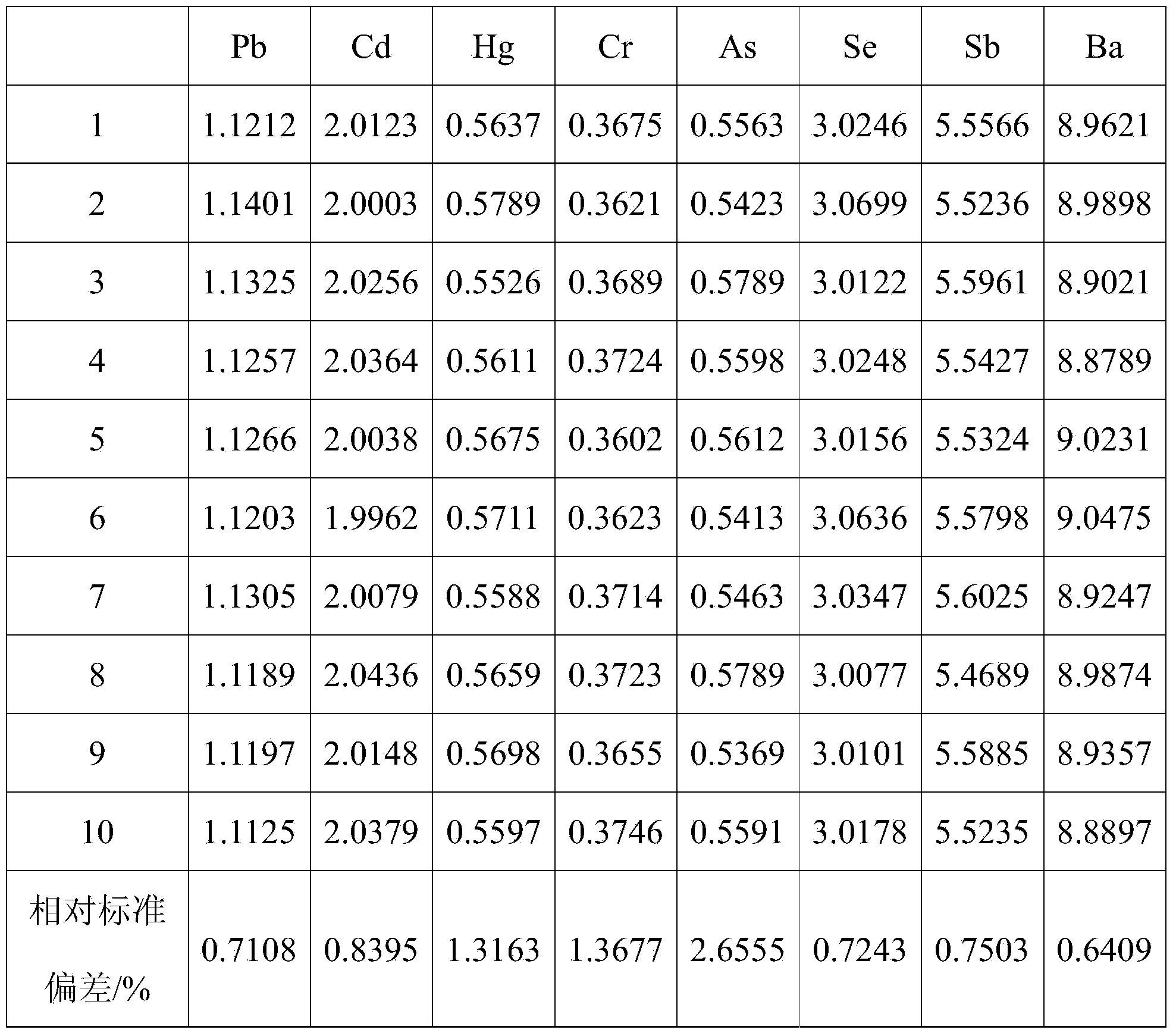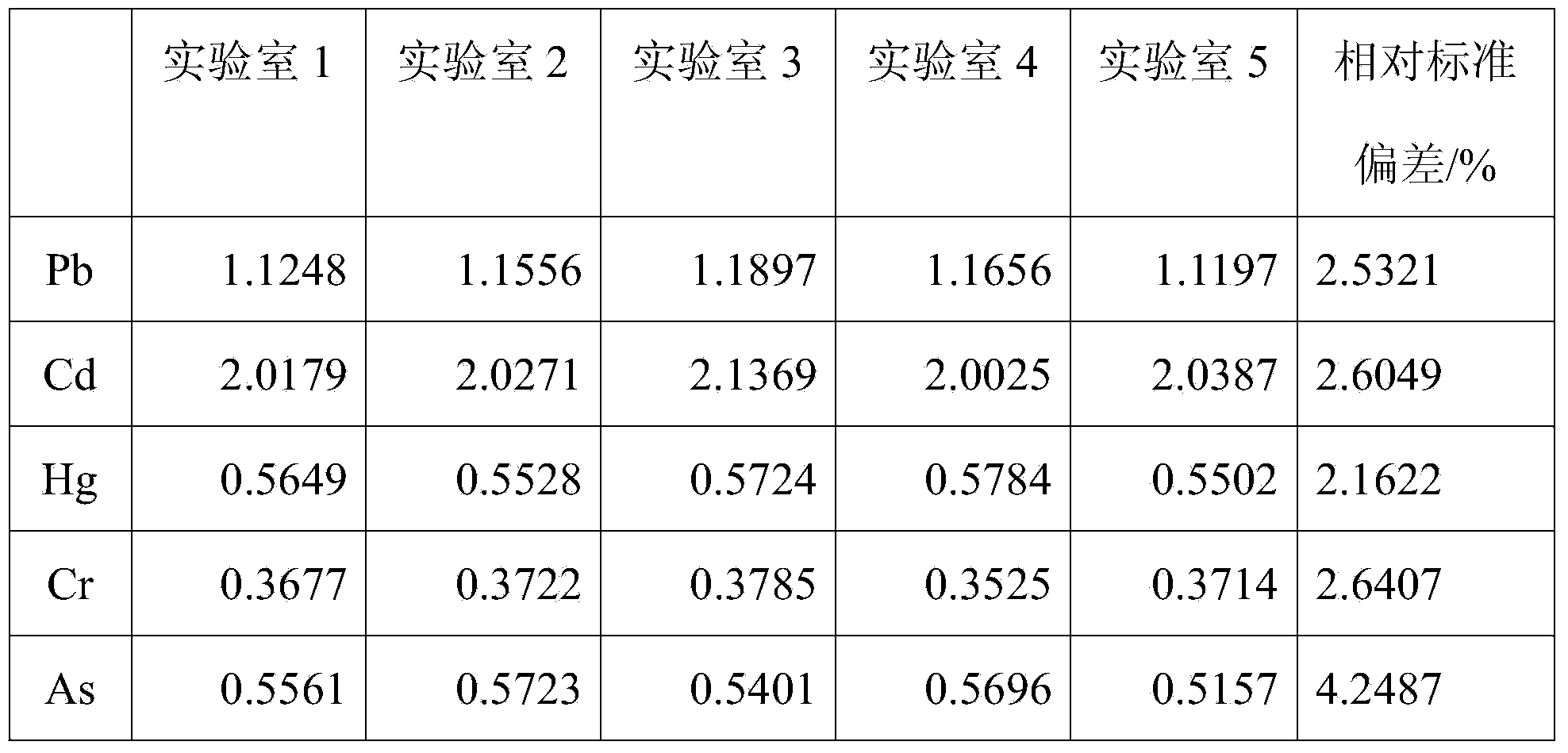Method for detecting content of heavy metal elements in metal or alloy material
A technology of alloy materials and detection methods, applied in the direction of material excitation analysis, preparation of test samples, thermal excitation analysis, etc., can solve the problems of protein denaturation, toxicity, etc., and achieve high accuracy, good repeatability and reproducibility, detection The effect of simple method
- Summary
- Abstract
- Description
- Claims
- Application Information
AI Technical Summary
Problems solved by technology
Method used
Image
Examples
Embodiment 1
[0036] (a) Weigh the sample linear diode plastic part with an electronic balance and cut it into particles no larger than 0.2g, and put it into a 100ml beaker;
[0037] (b) Add 10ml of analytically pure nitric acid to the beaker containing the sample: analytically pure hydrochloric acid=3:1 (volume ratio) solution, observe whether the sample is completely dissolved, if not, add a small amount of the above solution until the sample is completely dissolved If the sample cannot be completely dissolved, it can be heated on a heating plate at 100°C for 5-10 minutes until the metal sample is completely dissolved; the beaker used for pretreatment is rinsed with a small amount of deionized water, filtered with 0.45μm filter paper, and quantified to 100ml in the volumetric flask, and finally quantify it with deionized water to the scale line of the volumetric flask;
[0038] (c) ICP-OES quantitative analysis.
[0039] The content (in mg / kg) and repeatability of heavy metal elements in...
PUM
 Login to View More
Login to View More Abstract
Description
Claims
Application Information
 Login to View More
Login to View More - R&D
- Intellectual Property
- Life Sciences
- Materials
- Tech Scout
- Unparalleled Data Quality
- Higher Quality Content
- 60% Fewer Hallucinations
Browse by: Latest US Patents, China's latest patents, Technical Efficacy Thesaurus, Application Domain, Technology Topic, Popular Technical Reports.
© 2025 PatSnap. All rights reserved.Legal|Privacy policy|Modern Slavery Act Transparency Statement|Sitemap|About US| Contact US: help@patsnap.com



